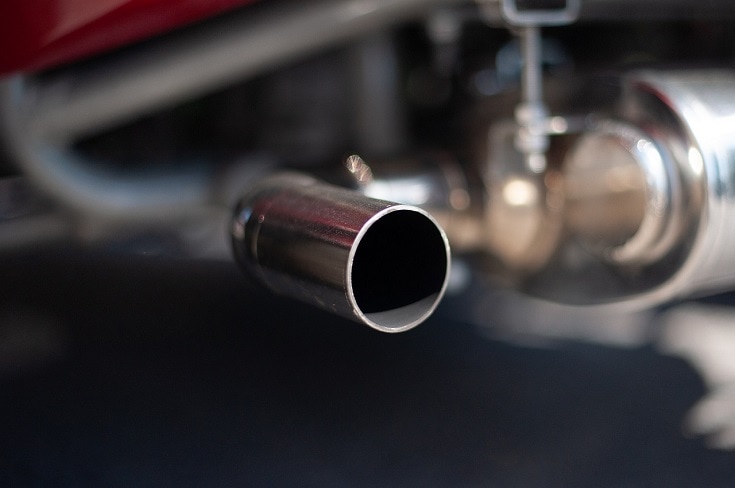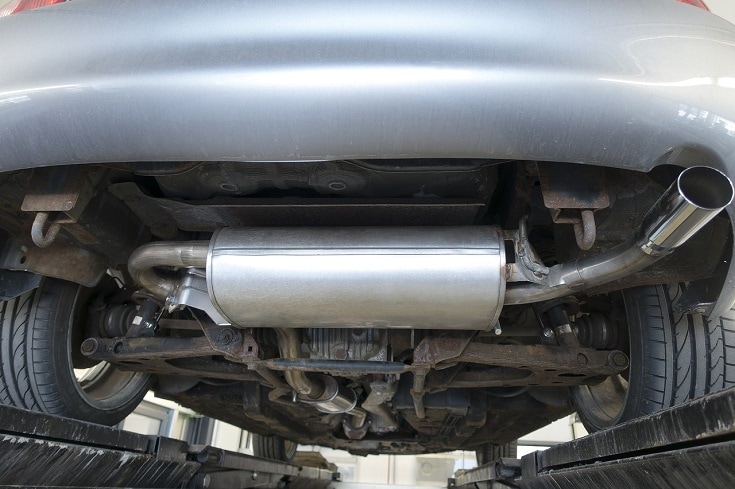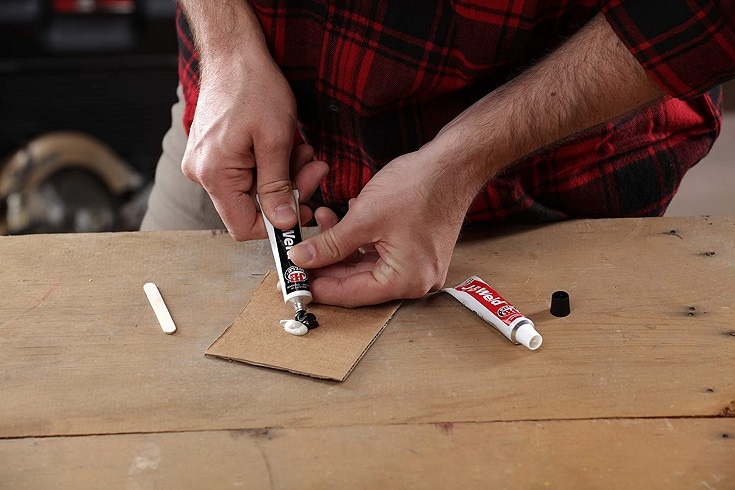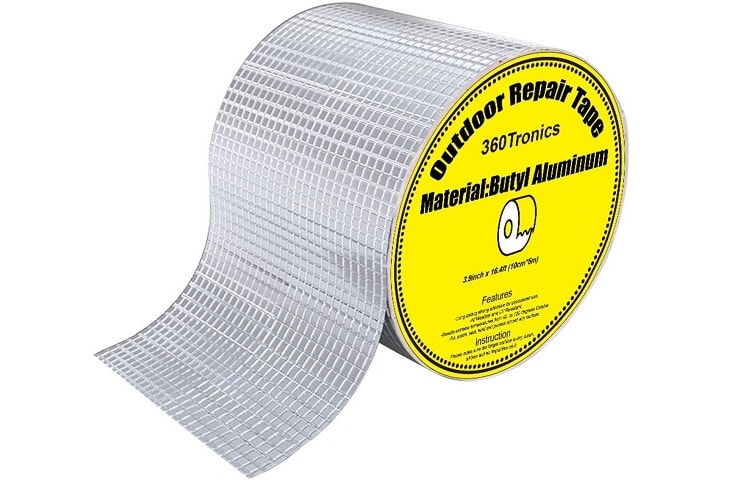How to Fix an Exhaust Pipe Without Welding – A Complete Guide
Last Updated on

An exhaust leak can interfere with the smooth running of the engine and leads to poor fuel economy. Leaks are usually characterized by loud noises. But they can also cause the engine light to come on or release toxic fumes into the cabin. If your exhaust pipe corrodes extensively, you may need to buy a new one. But if you are only dealing with a small leak, you don’t have to incur unnecessary expenses. With locally available materials, you can fix any leakage without involving a welder.
Materials
You don’t need to buy expensive materials to seal leakages. You can purchase all the materials listed below from your local store without breaking the bank.
- Hand gloves
- Sandpaper
- Metal wire brush
- Soapy water
- Putty
- Muffler bandage
- Exhaust band clamp
How to Find the Leak
Fixing a leak is easy when done right, but it is usually the trickiest part. You can confirm a leak by listening for any changes to the sound when the engine is idling. Once you are sure the pipe is leaking, use any of the following methods to flush the leak out.
Inspect the Pipe
Jack the vehicle up and inspect the exhaust for any signs of holes, cracks, scrapes, or rust. Speed bumps, potholes, and other debris along the road can get caught on the exhaust pipe, causing damage. So, don’t forget to check the underside of the vehicle for leaks.

If the damage is not visible, move your hand over the pipe while the engine is running. If there’s a hole, you can tell when the discharged air hits your hand. However, never place your hand or any part of your body on the hot exhaust surface to avoid burns. Also, ensure the brakes are on before your slide under the car.
Plug the Tail
Use a pair of gloves to plug the tail of your exhaust and start the engine. After making sure the emergency brakes are on, press the gas pedal. Pressure will start to build inside the exhaust system. And with the only way of escape blocked, the fumes will escape through the leaks. You can spray soapy water along the exhaust pipe to identify small leaks faster through air bubbles.
If you don’t want to keep your engine running, you can create positive pressure inside the exhaust system by pushing air inside. A leaf blower, air compressor, or shop vac will do the trick. If your vehicle has two exits, make sure to seal one of them first. Also, ensure the engine is cold before pumping cool air into the exhaust. Rapid cooling could warp or crack parts of your vehicle.
Preparation
Before fixing exhaust pipe without welding, you need to clean the area first to create a good bonding surface. Use sandpaper or metal wire brush to remove any dirt, grease, or rust. Afterward, use a towel to wipe the surface with isopropyl alcohol to wipe the areas you just scraped.
How to Seal the leak
You can use four different methods to seal a leak. The one you pick will depend on the nature and size of the damage. Let’s dive right in.
1. Apply an Epoxy Bond

If the hole is small enough, you can use epoxy to seal the leak. Once you clean the surface, stir the epoxy to mix it evenly before applying it on and around the hole. You can use a wooden dowel to spread the sealant around the affected area. Different products will have varying curing rates. So, make sure to read the instructions to know how long you must allow it to dry before starting the engine.
2. Wrap it with Exhaust Tape
An exhaust tape is an ideal solution if you are dealing with a larger hole. Wrap the tape around the hole, making sure to extend a few inches on either side. Cover the hole with at least two layers of tape for effective sealing. Since different exhaust tapes require different methods of application, make sure to read the instructions beforehand. Some require you to heat the engine first, while others need to be wet before application.
3. Use an Exhaust Clamp
If the hole or damage is not extensive enough, you can cover it using an exhaust clamp. The process is straightforward. You only need to wrap the clamp around the whole, fix the bolts, and tighten them down to cover the hole. Since the clamp is made from stainless steel, you should expect it to outlive the exhaust pipe.
4. Cover the Hole with an Aluminum Patch
You can use an aluminum patch to cover holes of any size. Once you examine the extent of the damage, use a pair of heavy-duty scissors to cut a slightly larger aluminum patch. You may only need to cut a small piece of aluminum for small holes. With larger areas, wrap the aluminum around the pipe for effective sealing.
Cover the area around the leak with epoxy. Apply enough to seal the patch but not so much that it drips into the exhaust pipe. Place the patch directly over the leak or wrap it around the exhaust pipe, depending on the damage. Afterward, use a wooden dowel to apply epoxy along the edges of the patch. If you wrap the patch all around the pipe, secure it on both ends with hose clamps.

Conclusion
A leak on the exhaust pipe is not only annoying, but it poses a lot of risks. It can fill your cabin with poisonous fumes that can make you sick or fall asleep at the wheel. Moreover, it can interfere with the normal running of the engine and affect the entire system. Hopefully, you have learned the different ways to identify the leaks and how you can fix exhaust pipes without welding.
Luckily, all the methods listed above are DIY friendly and don’t require expensive materials. So, the next time you detect a leak in your exhaust, you don’t have to procure the services of a welder. You can fix the problem yourself without forking out a lot of cash.
Leaks are also common in car exhaust manifolds and headers. You can read more about those here.
Featured Image Credit: AndrzejRembowski, Pixabay
